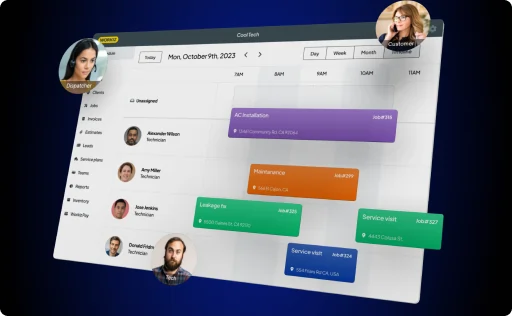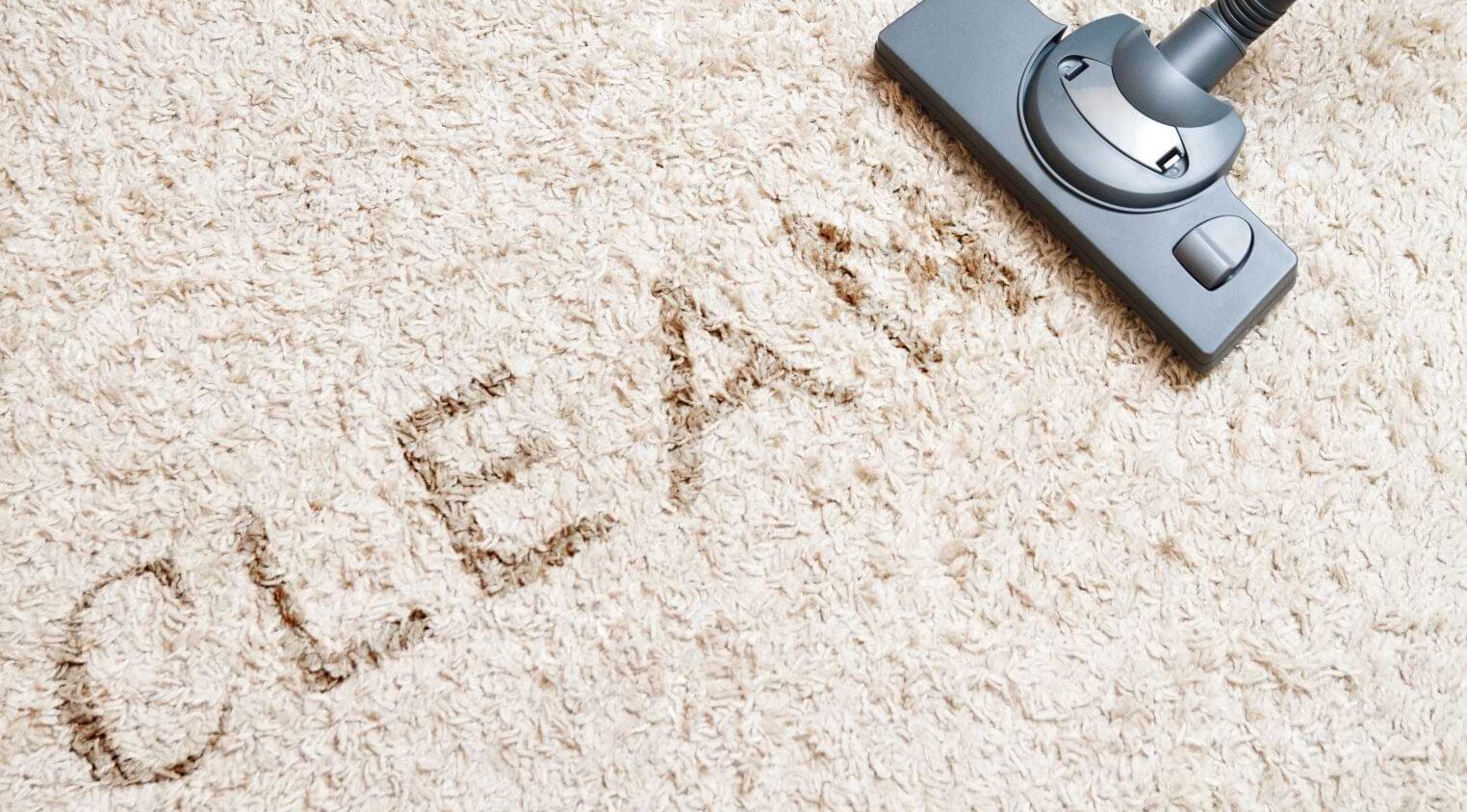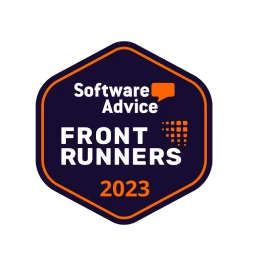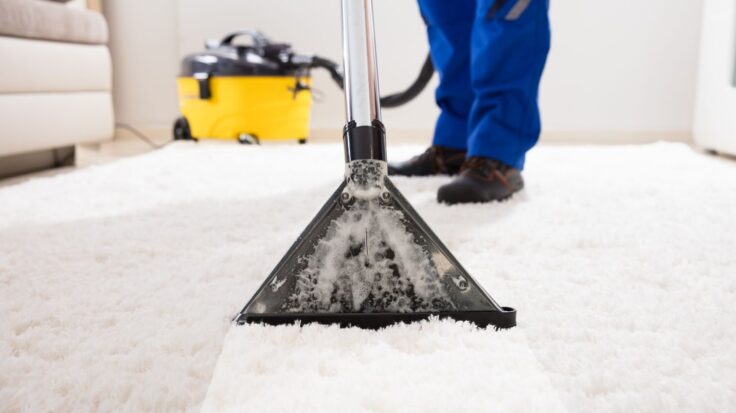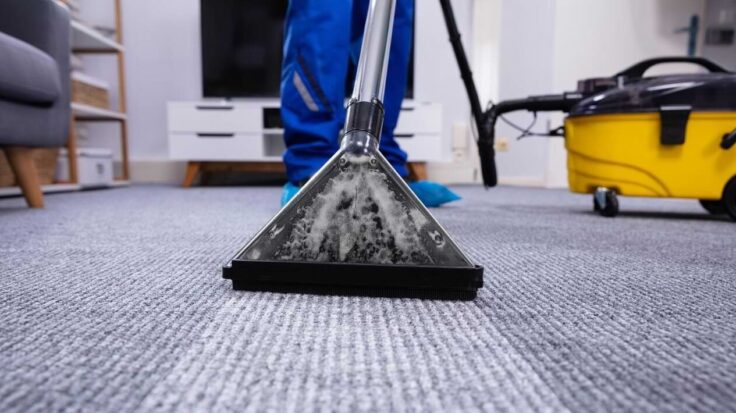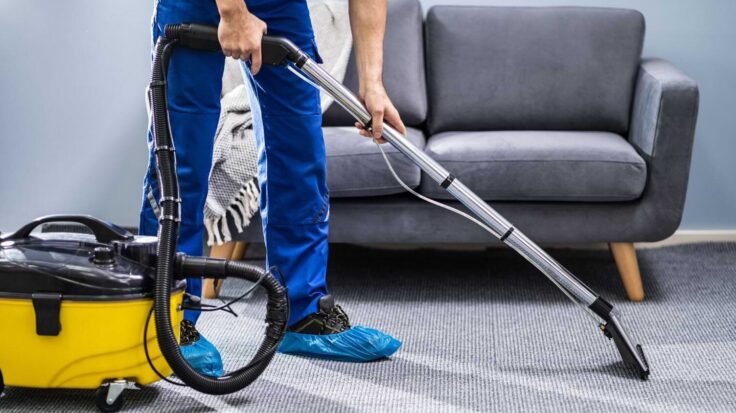As more companies get ready to reopen after the 2020 lockdown, the demand for disinfecting services is also rising. In plain English, 2024 seems the perfect year for starting a business in this niche, provided that you have a reliable carpet cleaning business plan and follow it in detail.
Growing a carpet cleaning business won’t be without challenges. Planning is vital when entering a $4 billion market, where more than 31,000 companies operate. Increased competition from janitorial service providers and the adoption of laminate and hardwood flooring can significantly limit the demand for specialized services. You must know your potential client’s needs and build your business plan around them to grow a successful company.
Here’s the ultimate business plan outline that you can use to build your strategy and secure successful business outcomes.
Start with a carpet cleaning business plan template
When you say “business plan,” most people automatically think of long and complicated documents built around numbers and charts. Luckily, you won’t need one of those for this task.
Your business plan should include the following sections:
- Executive Summary
- Initial Expenses
- Market Analysis Summary
- Services
- Locations
- Financial Plan and Pricing
- Marketing & Sales
- Management
Let’s take a closer look at what you should write in each of these sections.
1. Executive summary
The executive summary is a brief description of your business. Define in one sentence the problem that you solve for your clients – something like “turn dirty carpets from a breeding ground for bacteria and germs into sanitized, safe flooring.”
Add a short presentation of how you solve that problem, focusing on your business’s aspects that differentiate you from your competitors. For example, you can mention green services included in your offer, personalized customer support, or flexible payment plans.
This section is a summary of the entire document, so it’s better if you write it after you’ve gone through the other areas of the carpet cleaning business plan for 2024
2. Initial expenses
Initial costs depend on whether you want to work as an independent or buy a franchise. Both business models have their pros and cons, so you should do in-depth research before deciding.
Becoming an independent contractor
As an independent carpet cleaning business, you’re on your own, so you’ll have to handle everything from opening a business and buying equipment to training employees and getting clients. Let’s see what costs you should expect in this scenario:
- Equipment and supplies. A basic cleaning kit should include an industrial vacuum, a steam carpet cleaner or dry carpet cleaner with attachments, a professional spotting kit, and detergents. Prices start at $3,000, but you’ll pay more for top equipment. You can also look for second-hand equipment or renting opportunities.
- A truck or a van. A new pickup truck can cost around $18,500, to which you need to add fuel and maintenance costs.
- State licenses and permits. Between $100 and $500, depending on the state where you operate.
- Insurance. Count at least $30 a month if you work alone. The price grows with the number of employees.
- A separate bank account. Costs vary with the bank. Some may also require a minimum deposit when you start.
- Office space. You can save resources if you decide to run your business from home. However, note that you may be forced to rent space to store your equipment and hazardous substances safely.
- An accountant. Costs for accounting services vary with the tasks you need the accountant to perform. The average hourly rate is close to $40.
- Utilities. Even if you work from home, you still need a dedicated phone number where potential clients can contact you. Also, if you don’t have a reliable internet connection, it’s time to get one.
- Employee salaries. This expense varies with the number of employees. As a guideline, a cleaner’s average base salary in the US is $11.99 per hour.
- Training. For example, an IICRC Carpet Cleaning Technician (CCT) Course can cost anywhere between $299,00 and $399,00.
Besides these expenses, you’ll want to include any costs related to market research and marketing. The US Small Business Administration provides a cost calculator that you can use to get a full financial picture before you get started.
Buying a franchise
Buying a carpet cleaning franchise can be a cheaper alternative to building a business from scratch. Among the benefits, you can include a done-for-you business model, training for your employees, and working under an established brand.
Generally, cleaning companies have multiple packages available for new entrepreneurs. Prices vary from $4,000 to over $100,000, depending on the business model you opt for and the type of support you receive.
This section is a summary of the entire document, so it’s better if you write it after you’ve gone through the other areas of the carpet cleaning business plan for 2024.
3. Market analysis summary
Start your market analysis summary by defining who your ideal client is. If you plan to do residential cleaning, you can target homeowners or property managers. On the other hand, if you have a commercial carpet cleaning business, your audience includes commercial property managers, hotel managers, and Airbnb renters.
The next step is an analysis of the factors that can influence your bottom line. Here, you want to focus on:
- Strengths: what differentiates you from your competitors?
- Weaknesses: what your competitors offer that you don’t.
- Opportunities: areas where there are few competitors, innovative technology that other companies don’t use, and the possibility to promote yourself in the local media.
- Threats: anything that could impact your business (such as another lockdown, for instance).
- Suppliers: the possibility to find the best cleaning products at affordable prices.
- Buyers: identify as many potential clients as possible so that you don’t depend on a limited number of clients.
- Substitutes: see how many companies can substitute your services with cheaper alternatives (janitorial service providers or carpet cleaner rentals, for example).
- Direct competitors: research online the companies that provide the same service in your area to identify the niche where you have more room for growth.
To complete this section, you need industry insights. Besides researching potential competitors to see what they do and what services they provide, download at least one or two industry reports (ideally updated in 2020) or analyses conducted by local organizations in your area. This way, you get an idea about the number of competitors and the industry trends that can influence your target public’s buying decisions.
4. Services
Use the information gathered while researching your competitors to put together an exhaustive list of services you can provide your clients.
You can include:
- Upholstery cleaning
- Anti-allergy cleaning
- Tile, grout, and linoleum cleaning
- Green cleaning
- Speed dry service
- Carpet protectant
- Floor waxing
- Oriental rug cleaning
5. Locations
In this section of your carpet cleaning business plan, you define the geographical area where you operate. Ideally, you’ll cover an area big enough to provide a consistent number of clients. Furthermore, it’s in your best interest to scout out the competition operating in the same zone to understand how you can position yourself on the market and get clients.
At the same time, you should consider commute costs and set clear limits. This way, you minimize the risks of spending more time driving to your clients’ locations than cleaning carpets.
6. Financial plan and pricing
Most companies in this niche go with prices per room or square feet. What matters is that you set a fair price for your services after considering all your expenses (including taxes) and your financial goals.
It’s wise to take a look over your competitors’ offers, but it’s in your best interest not to build your pricing strategy exclusively on how other companies price their services. Knowing what competitors charge should help you position yourself on the market instead of significantly influencing your business decisions.
Once you know your prices, you can start drafting a financial plan. Include here some sales forecasts – how many clients you can take each day, what revenues you can bring in every week/month/year, how much it costs you to deliver the services that generate this income, and how you can manage cash flows to make sure you always have the materials necessary to complete a cleaning job.
7. Marketing and sales
The smartest way to handle marketing and sales is by working backward. When writing your carpet cleaning business plan, start from the goals you want to achieve to identify your business’s right marketing goals.
Let’s say you want to have ten contracts by the end of the year. It means that you (or your salesperson) should talk with at least 40 to 50 potential clients. To convince 50 people to speak to you, you’ll need to have contacted at least 500.
So, how do you spread the word about your business to reach 500 people that match your ideal client? You will need a social media presence on networks like Facebook, Instagram (for residential cleaning services), or LinkedIn (for commercial cleaning services). You’ll also need a website, a Google My Business account, or maybe a YouTube channel, depending on how comfortable you are when it comes to growing an audience.
Implement all your marketing ideas with your ideal clients in mind, focused on their needs and expectations.
8. Management
This section includes the administrative tasks you’ll handle as you grow your business. Initially, you need to focus on three major areas:
- How you’ll book appointments? It may seem easy initially, but once you bring in several clients, you’ll need to commute between locations, plan optimal routes, and even organize shifts to cover all appointments. Block some time in your schedule to look for digital tools to help you stay organized. Workiz, for example, enables you to easily schedule jobs, send automatic customer notifications, manage invoices with only a few clicks, and much more!
- Managing teams. Even if you start your carpet cleaning business alone, you’ll have to hire help to support growth. Switching from being self-employed to managing teams comes with more responsibilities, so you want to be prepared. Find online classes you can join to learn how to organize cleaning teams effectively and increase productivity.
- Training. Schedule training for your employees, too. You want to make sure they’re the best at cleaning carpets and delivering excellent customer service to improve customer retention rates.
What’s next?
Your carpet cleaning business plan for 2024 is ready. The sooner you start working on your business, the more likely you are to sign your first clients and earn money.
So, where do you start? Here are things you can do right away to turn your business idea into a reality:
- Check out the local page of The Small Business Administration in your area and find out what permits or licenses you need for your carpet cleaning business, then start putting together the paperwork.
- Search carpet cleaning providers in your area and make a list of all the companies you can find. Analyze services, prices, and unique selling points.
- Look for equipment providers and compare prices and technologies to ensure you provide your clients with the best services on the market.
- Join a digital marketing course to get at least an idea of how your marketing should look like. You might decide you don’t want to do marketing alone, but this knowledge will help you choose the best partners to promote your business and get clients.
Try out Workiz today and get all of the tools you need to manage your carpet cleaning business.
